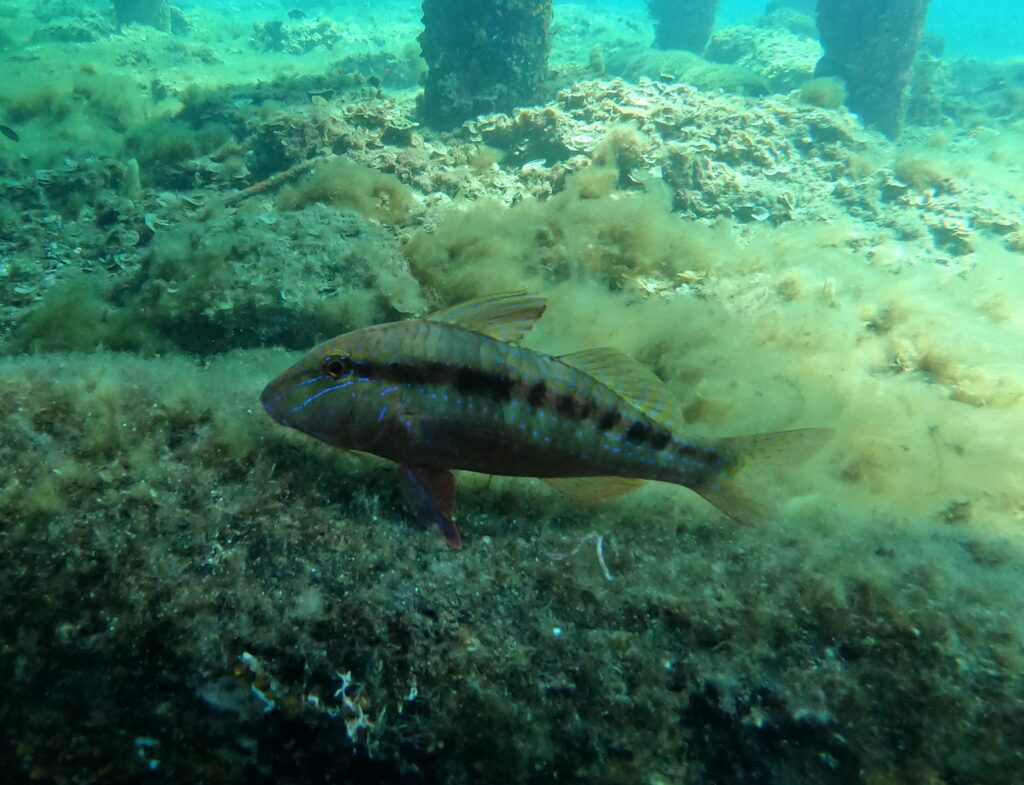Goatfish; Blue-Spotted
Upeneichthys vlamingii
Blue-spotted goatfish are highly variable between adult and juvenile stages. Adults are ornamented with blue spots and lines, with red, yellow and orange areas and a reddish-brown stripe that runs from their eyes to their tail. Small juveniles are almost white, sandy on the upper surface above the black midlateral stripe. The blue spots on the head and body are sometimes difficult to see, as the fish can lighten or darken in colour according to their environment or mood. Courting males are blue tinged pink rather than red and have bright blue markings on the fins. At night, or when removed from the water, goatfish are bright orange-red splotched with white.
Juvenile fish form small loose schools on shallow protected sandflats where they spend most of the daylight hours foraging on the bottom for small crustaceans and worms. They use a pair a barbels, situated beneath the chin, which is a feature of all goatfish, to probe the sediment to locate invertebrates, crustaceans and small fish to feed on. In contrast adults are more commonly found on their own near the edge of reefs or in deeper coastal waters (to 40 metres), where much of their time is spent resting.
The life span of the blue-spotted goatfish is unknown. Juveniles settle out of the plankton at 3-4 centimetres in length, while they are still silver, which changes quickly to white. They grow rapidly to reach a length of about 15 centimetres by the end of their first year, growth slows significantly after this time. Pair spawning occurs, where courtship involves the brightly coloured male moving around the female in circles, displaying his bright yellow dorsal fins and swimming side by side upwards to about 2 metres off the seafloor. It is here that gametes are released into the water column, and the pair immediately separate.
Blue-spotted goatfish often seek out cleaning stations, where it will stay motionless, open its fins, barbels and mouth while a western king wrasse hovers over it removing any parasites or dead organic matter. Blue-spotted goatfish are found from Jurien Bay, WA to Wilsons Promontory, Victoria. Maximum length 35 centimetres.
Other common names include: Southern Goatfish, Red Mullet, Black-striped Goatfish, Blue-Lined Goatfish, Blue-Striped Red Mullet, Goatfish, Mullet, Southern Red Mullet
Occurrence at the Busselton Jetty
Blue-spotted goatfish are seen feeding and resting around the underwater observatory on a daily basis all year round. During the summer months small schools of juveniles (4 – 10 centimetres in length) are seen busily probing the sediment in search for food. Often when resting the goatfish is happy to be cleaned by a female Western King wrasse.
Image by: O. Rynvis
